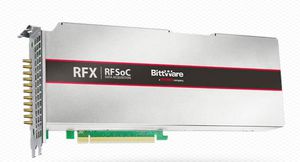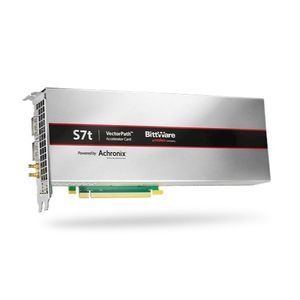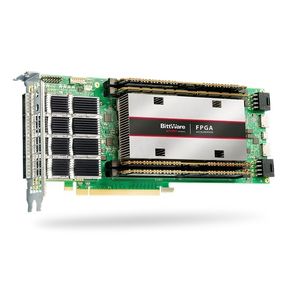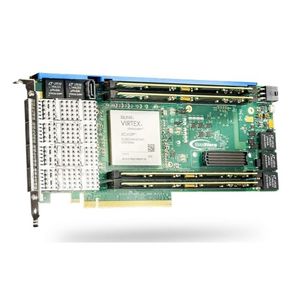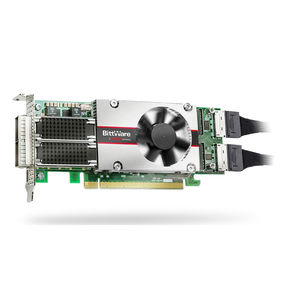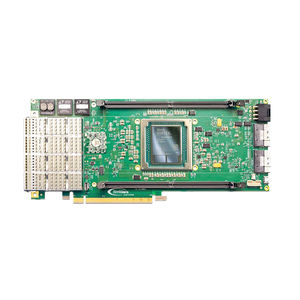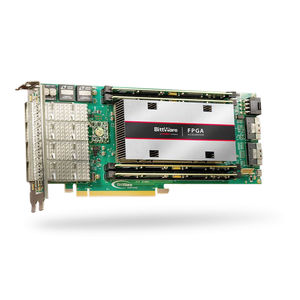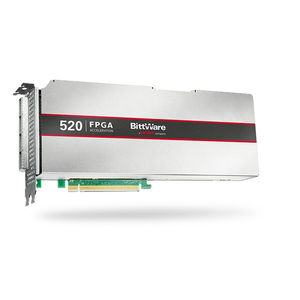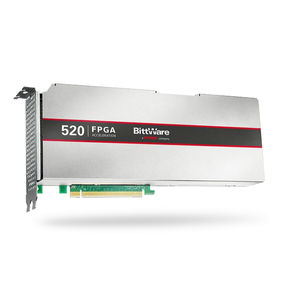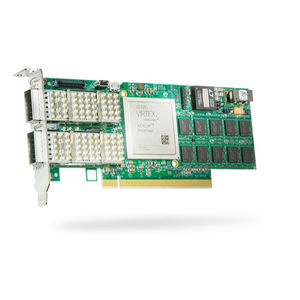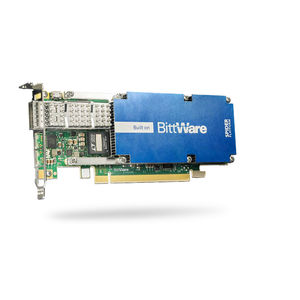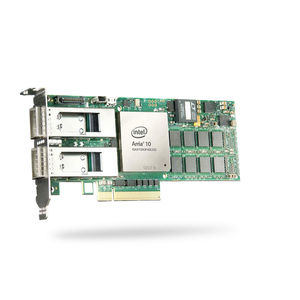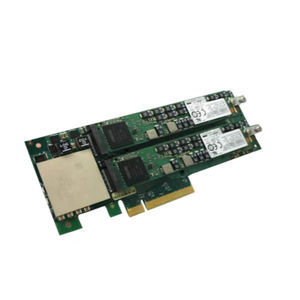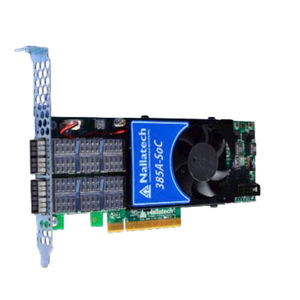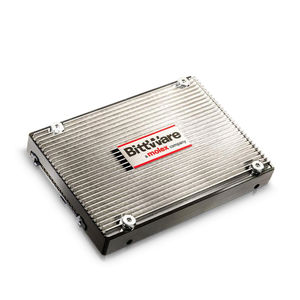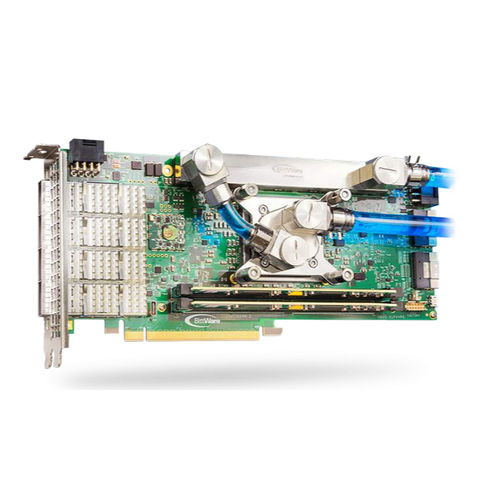
- Products
- Mini PCIe Fpga card
- BittWare
Mini PCIe Fpga card XUP-VVPwith I/O processor
Add to favorites
Compare this product
Characteristics
- Bus standard
- Mini PCIe
- Input/output
- with I/O processor
Description
Xilinx UltraScale+ 3/4-Length PCIe Board
Power Edition for Monster FPGA Loads
Features
300A FPGA core power supply
Viper platform Liquid Cooling option for extreme FPGA loads
Up to VU13P FPGA: 3.8 million LCs and 360Mb UltraRAM FPGA by Xilinx
Overview
BittWare’s XUP-VVP is an UltraScale+ VU13P FPGA-based PCIe card, designed for ultra high power applications. The Xilinx UltraScale+ VU13P FPGA gives designers incredible performance potential, with 3.8M logic elements —yet with a power density that makes power and thermal management difficult. The XUP-VVP meets this challenge with BittWare’s Viper platform, supporting monster FPGA loads, up to 256 GBytes DDR4 or 1152 Mbits QDR-II+, and 4x 100 Gbps Ethernet.
BittWare’s Viper platform uses advanced computer flow simulation to drive the physical board design in a thermals first approach, including the use of heat pipes, airflow channels, and arranging components to maximize the limited available airflow in a server. While the default option for the board is air-cooling, the XUP-VVP is also available with liquid cooling for rapid heat removal. A 300A FPGA core power supply powers even the largest FPGA loads.
Board Specifications
FPGA
Virtex UltraScale+
VU13P D2104 package
Core speed grade – 2
Contact BittWare for VU9P/VU11P FPGA options
On-board Flash
Flash memory for booting FPGA
External memory
2 DIMM sites, each supporting:
Up to 128 GBytes DDR4 x72 with ECC
Up to 576 Mbits dual QDR-II+ x18 (2 independent 288 Mbit banks)
Host interface
x16 Gen3 interface direct to FPGA (optional; no power used from PCIe connector)
USB ports
Catalogs
XUP-VVP
2 Pages
*Prices are pre-tax. They exclude delivery charges and customs duties and do not include additional charges for installation or activation options. Prices are indicative only and may vary by country, with changes to the cost of raw materials and exchange rates.



